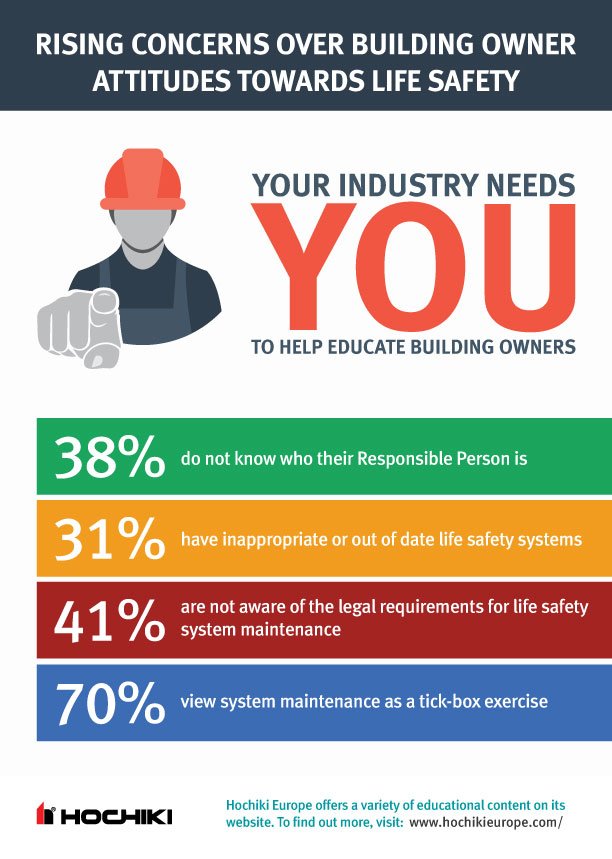More than a third of installers report that up to 80% of sites they visit don’t comply with fire safety regulations, research from Hochiki Europe has revealed.
Based on feedback from installers across Europe, the survey also found that more than 60% of respondents attended sites at least once a month where ‘the responsible person’ for fire safety was unknown.
Almost a third (32%) regularly encountered buildings with poorly positioned or outdated life safety equipment.
Asked about systems maintenance, 70% of installers got the impression their customers generally saw the upkeep of life safety systems as merely a ‘tick-box exercise’, with just 11% believing they recognised it as a potentially property- and life-saving process.
Two in five (40%) installers say their customers are not even aware of their legal obligations regarding system maintenance. On average, 55% of fire detection logbooks and 64% of emergency lighting logbooks were not up to date, despite these being legal requirements.
Top 5 maintenance and emergency lighting issues
Asked what the most commonly encountered fire safety maintenance issues were, installers most frequently cited the following:
- Change of building/room use without correctly altering the fire system (50%)
- Inadequate logbook records (43%)
- Original installer didn’t install the best system for the environment (40%)
- Detectors need cleaning (32%)
- Detectors need replacing (26%)
The top five emergency lighting maintenance issues, meanwhile, were:
- Broken/faulty lamps (44%)
- Inadequate logbook records (42%)
- Inadequate emergency lighting signage (39%)
- Batteries not charged in emergency lighting units (35%)
- Inadequate lux levels (25%)
“Having a correctly designed safety system installed by a qualified engineer in a building is vital when it comes to protecting lives,” said Tracy Kirk, general manager of sales and marketing for Hochiki Europe. “This being said, a fire detection device or emergency lighting unit can only safeguard occupant safety if it is in working order.”
“This year’s installer study has resulted in some stark findings for the industry and sheds light on serious gaps in terms of our customers’ attitudes towards life safety in Europe. It’s clear that there needs to be an increased focus on educating duty holders throughout our built environment on how important it is to look after life safety systems.
“Those with the responsibility of system upkeep should also ensure they are up to speed with the latest legislation and regulations to keep building occupants safe.”
Hochiki Europe offers training courses and technical information to support building owners and facilities managers in understanding their legal obligations and how to protect assets and building occupants.
Subscribe to the IFSEC Insider weekly newsletters
Enjoy the latest fire and security news, updates and expert opinions sent straight to your inbox with IFSEC Insider's essential weekly newsletters. Subscribe today to make sure you're never left behind by the fast-evolving industry landscape.
Sign up now!


